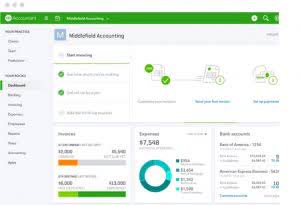Content

The equity multiplier, the profit margin and the total asset turnover. Days sales in inventory is calculated by dividing ending inventory by cost of goods sold and multiplying by the number of days in the period, usually 365. The result shows how long it takes the company to sell their full inventory stock. This change of COGS from the denominator in DSI to the numerator in inventory turnover is a key difference.
- ROE signifies the efficiency in which the company is using assets to make profit.
- The faster a company is able to go through its inventory, you are able to conclude that the company has strong sales.
- The asset turnover ratio measures how much net sales are made from average assets.
- A company may change its method for calculating the cost of goods sold, such as by capitalizing more or fewer expenses into overhead.
- Decreased net income can result when too much capital that could be used profitably elsewhere is tied up in current assets.
- Finished goods were worth $1.95 billion, work in progress was worth $385 million, and raw materials of around $665 million.
Whereas, Days outstanding inventory refers to the average number of days it takes a company to replace its inventory for actual sales. As mentioned earlier, the concept of Days outstanding inventory is not different from the concept of days sales of inventory , both of which have the same meaning but no more. Financial ratio analysis is only useful if data is compared to past performance or to other companies in the same industry. Standing alone, a single financial ratio may not be informative. Investors gain greater insight by computing and analyzing several related ratios for a company. As guides to aid comparison, percentages and ratios are useful in uncovering potential strengths and weaknesses. However, the financial analyst should seek the basic causes behind changes and established trends.
Can Inventory Turnover Ever Be Too High?
Sales numbers and inventory reports supply much needed hard data that make inventory forecasting more accurate. This data can also help with future sales planning, such as suggesting ways to change your product mix or bundle items in creative ways to move slower inventory at potentially a higher margin.

It is calculated by dividing total earnings or total net income by the total number of outstanding shares. The higher the earnings per share , the more profitable the company is. Inventory Turnover RatioInventory Turnover Ratio measures how fast the company replaces a current batch of inventories and transforms them into sales. Higher days sales in inventory ratio indicates that the company’s product is in high demand and sells quickly, resulting in lower inventory management costs and more earnings. The reason why you want to calculate the inventory turnover ratio is that you want to know how fast is a company able to sell and replace its inventory in a given period of time.
What is a good inventory turnover ratio?
Ending inventory can be found on the company’s balance sheet, and COGS can be found on the income statement. 365 represents the number of days in a year, which is the period that is typically analyzed.

Since we are measuring the beginning and ending inventory values in one period, we will use a value of 2. Incorporated.Zone is a blog aimed at providing useful information about business, law, marketing, and technology. You will find different types of amazing content such as definitions, guides, reviews, comparisons, and other types of articles intended to provide you the knowledge you need to make decisions. This means that the company may have a lower sales volume and will have to carry the content of its inventory longer.
Financial Ratios
A farmer doesn’t need to purchase a new tractor annually, and most people aren’t scooping up designer jewelry on a whim. If you are not in that group, you may go to the back of the line. https://www.bookstime.com/ Cost of goods sold, aka COGS, is the direct costs of producing goods to be sold by the company. Total liabilities are all of the debts or obligations that detract from a company’s value.
- Are your inventory turnovers in line with the rest of your industry?
- Inventory turnover is typically measured at the SKU (stock-keeping unit) level, or segment level for tighter controls on specific stock levels.
- The debt-to-equity ratio measures a company’s debt liability compared to shareholders’ equity.
- The financial manager or an investor wouldn’t know if that is good or bad unless they compare it to the same ratio from previous company history or to the firm’s competitors.
- These ratios represent the financial viability of the company in various terms.
The first type of ratio we will analyze is a short-term solvency or liquidity ratio. The definition of solvency is where a firm has the capacity to meet its financial obligations when due. The definition of liquidity means that the firm has assets which are readily convertible to cash. On the balance sheet, this is why assets are listed by order of liquidity, because assets listed first are more readily convertible to cash than assets listed later. The return on equity measures how much profit a business generates from shareholders’ equity. For instance a company with a declining ROE could be seen as having more risk than a company in the same industry with an increasing ROI.
Inventory Turnover Ratio vs Days Sales of Inventory
A common size financial statement presents all items in percentage terms. A common size balance sheet shows all line items as a percentage of total assets, and a common size income statement shows all line items as percentages of sales. In this form, financial statements are relatively easy to read and compare. If a percentage of line item increases or decreases, then one can see easily whether a line item went up or went down.
- Including inventory in early stages of the production process may also distort the calculation as that inventory will not be immediately available to be sold.
- Financial ratio analysis uses the data contained in financial documents like the balance sheet and statement of cash flows to assess a business’s financial strength.
- When combined with an ERP system, inventory management software can help in streamlining your supply chain, SKU assignment and management, automated purchase orders and other functions and features.
- The main purpose of this measure is to track how adequate are the current inventory levels based on the level of revenues that are coming in per day.
- In terms of the cash flow impact, an increase in a working capital asset such as inventory represents an outflow of cash .
If the ratio is low, it can lead to a problem in the repayment of bills. Below we will discuss what a high or low DSI output means and its shortcomings that must be taken into consideration. It is most common to use the number of days in the year ; however, quarters, months, or weeks can also be used in the calculation. Since we are looking at annual figures in our example, we will use 365 days. Continuing our example with Procter & Gamble, the cost of goods sold for 2021 was $36.97 billion.
Gross profit margin ratio
Advisory services provided by Carbon Collective Investment LLC (“Carbon Collective”), an SEC-registered investment adviser. Days sales in inventory is computed within a period of one year but can be adjusted depending on what you need. Depending on the accounting practice, you can divide the average or ending inventory by the cost of goods sold. The reason we use the words favorable and unfavorable when evaluating variances is made clear when we look at the closing of accounts. To see this, consider that all variance accounts are closed at the end of each period , a favorable variance is always a credit balance, and an unfavorable variance is always a debit balance. Write a half-page memorandum to your instructor with three parts that answer the three following requirements. (Assume that variance accounts are closed to Cost of Goods Sold.) 1.
Frozen inventory can drive a business to face severe cash flow issues if it can’t quickly turn the situation around. Alternatively, another method to calculate DSI is to divide 365 days by the inventory turnover ratio.
